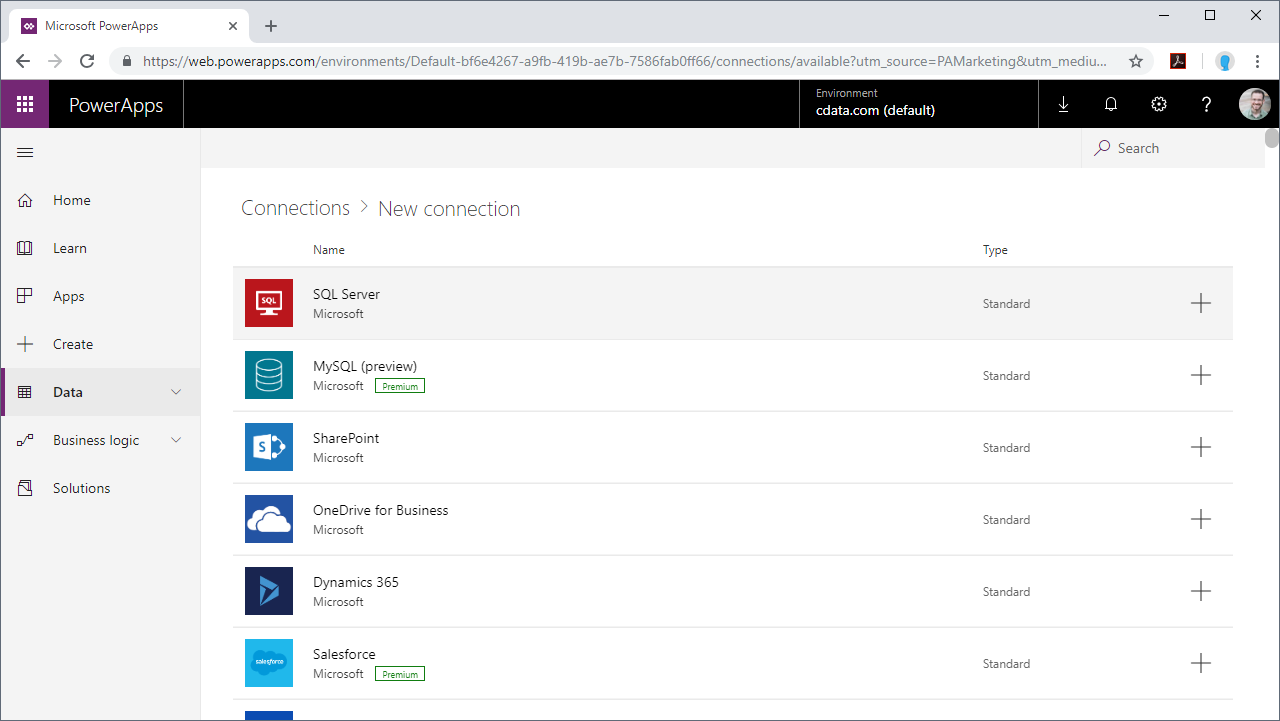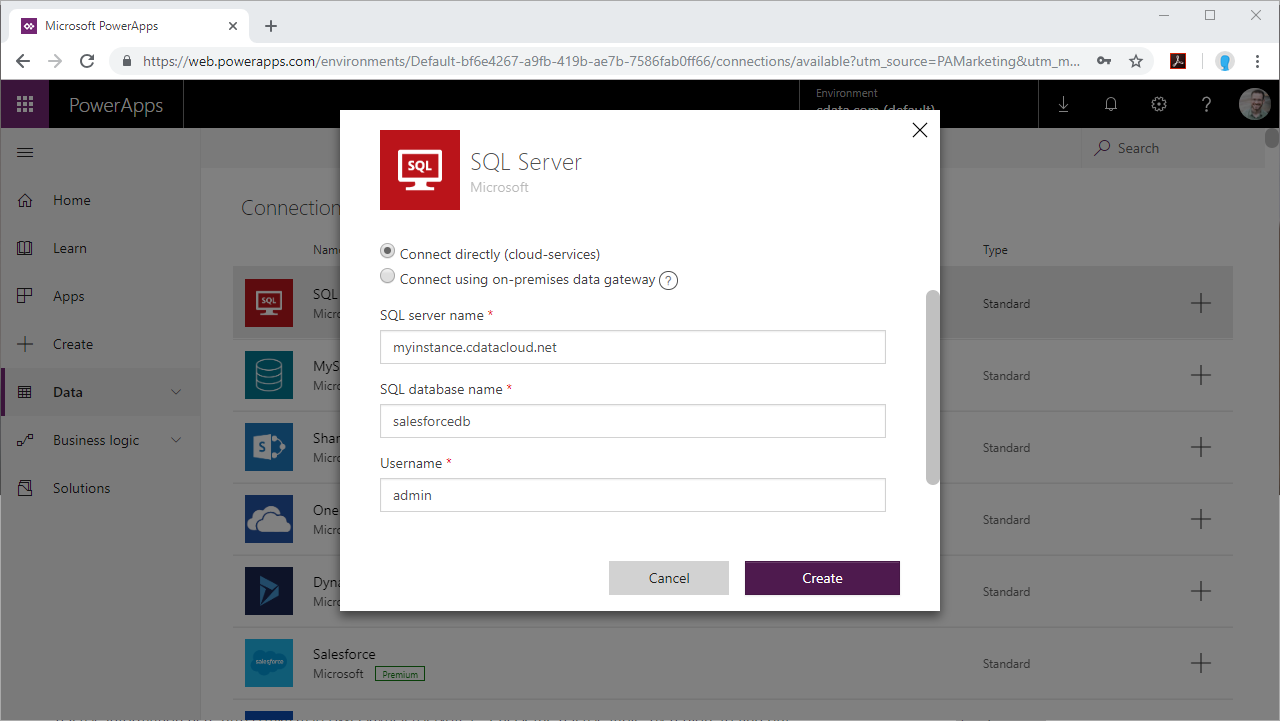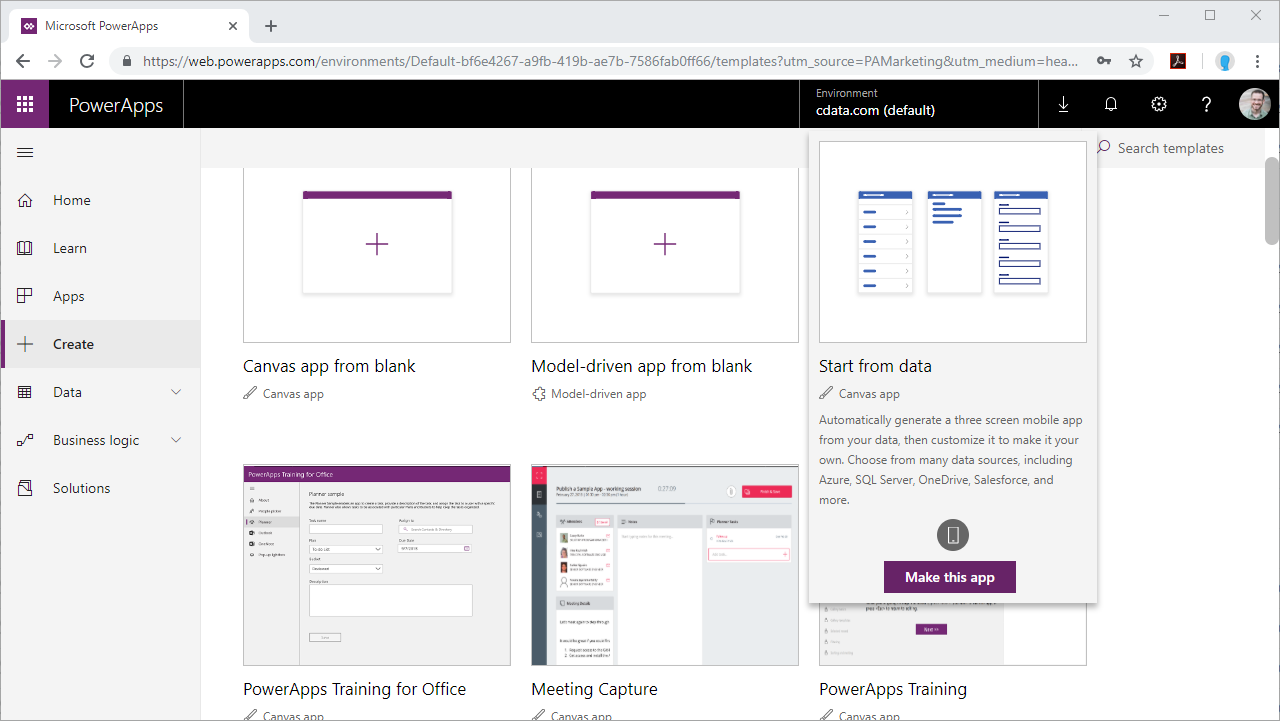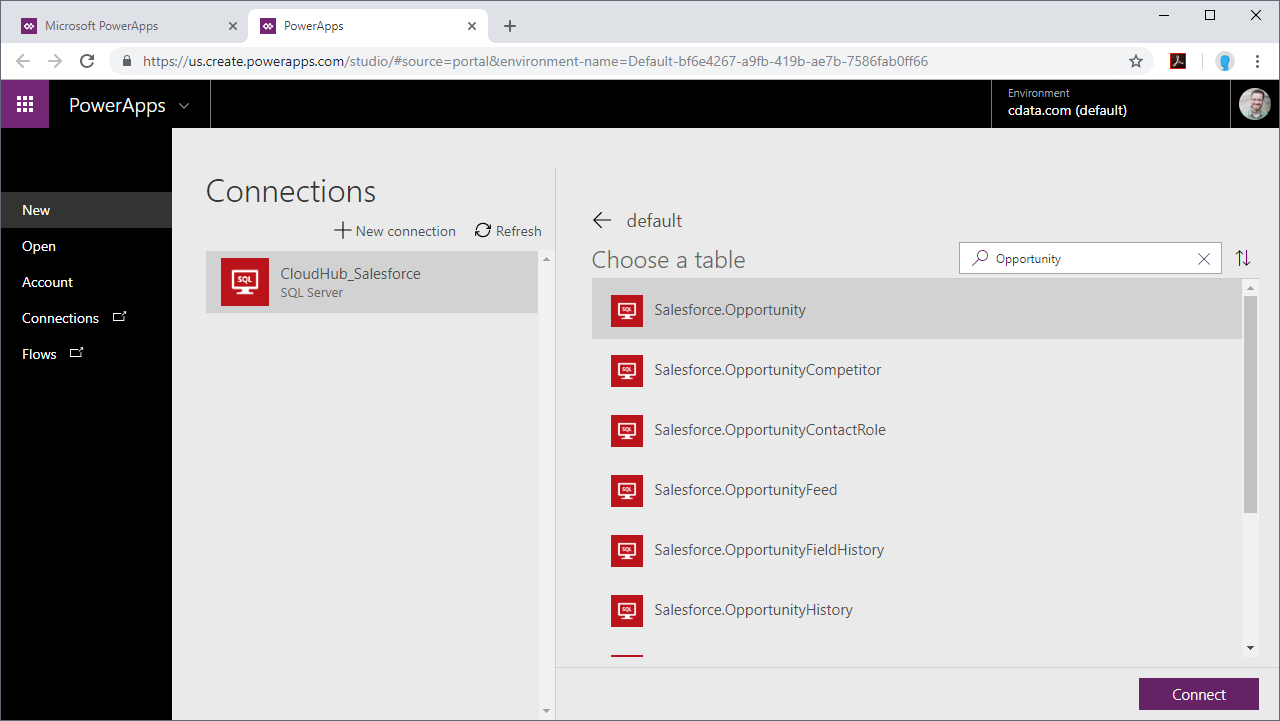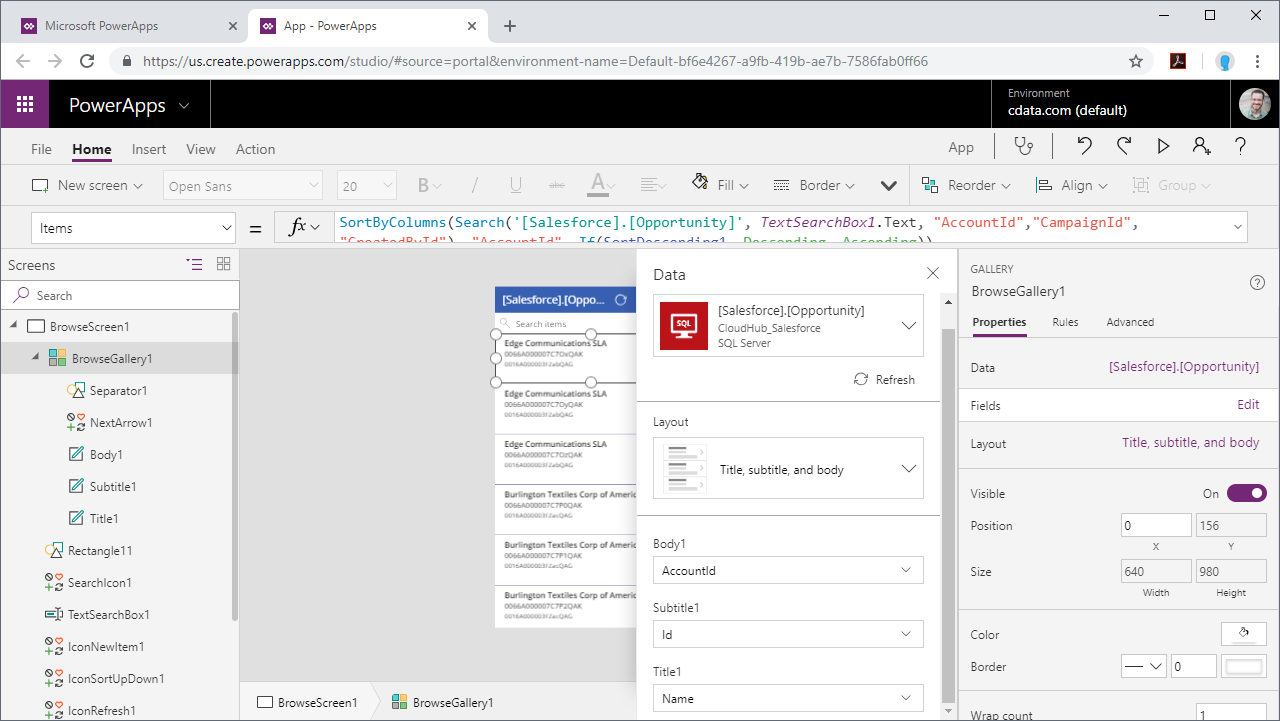Discover how a bimodal integration strategy can address the major data management challenges facing your organization today.
Get the Report →Integrate Live JSON Services into Custom Business Apps Built in Power Apps
Use CData Connect Server to create a virtual SQL Server Database for JSON services and integrate live JSON services into apps built in Microsoft Power Apps.
Power Apps is a service for building and using custom business apps that connect to your data and work across the web and mobile — without the time and expense of custom software development. When paired with CData Connect Server, you get instant access to JSON services from the apps you build using Power Apps. This article shows how to connect to Connect Server from Power Apps and build an app based on live JSON services.
CData Connect Server provides a pure SQL interface for JSON, allowing you to easily integrate with live JSON services in Power Apps — without replicating the data. CData Connect Server looks exactly like a SQL Server database to Power Apps and uses optimized data processing out of the box to push all supported SQL operations (filters, JOINs, etc) directly to JSON, leveraging server-side processing to quickly return JSON services.
Create a Virtual SQL Database for JSON Services
CData Connect Server uses a straightforward, point-and-click interface to connect to data sources and generate APIs.
- Login to Connect Server and click Connections.
![Adding a connection]()
- Select "JSON" from Available Data Sources.
-
Enter the necessary authentication properties to connect to JSON.
See the Getting Started chapter in the data provider documentation to authenticate to your data source: The data provider models JSON APIs as bidirectional database tables and JSON files as read-only views (local files, files stored on popular cloud services, and FTP servers). The major authentication schemes are supported, including HTTP Basic, Digest, NTLM, OAuth, and FTP. See the Getting Started chapter in the data provider documentation for authentication guides.
After setting the URI and providing any authentication values, set DataModel to more closely match the data representation to the structure of your data.
The DataModel property is the controlling property over how your data is represented into tables and toggles the following basic configurations.
- Document (default): Model a top-level, document view of your JSON data. The data provider returns nested elements as aggregates of data.
- FlattenedDocuments: Implicitly join nested documents and their parents into a single table.
- Relational: Return individual, related tables from hierarchical data. The tables contain a primary key and a foreign key that links to the parent document.
See the Modeling JSON Data chapter for more information on configuring the relational representation. You will also find the sample data used in the following examples. The data includes entries for people, the cars they own, and various maintenance services performed on those cars.
![Configuring a connection (SQL Server is shown).]()
- Click Save Changes
- Click Privileges -> Add and add the new user (or an existing user) with the appropriate permissions.
Connecting to CData Connect Server
To use Connect Server to integrate JSON services into your Power Apps, you need a new SQL Server connection:
- Log in to Power Apps
- Click Data -> Connections -> New connection
- Select SQL Server
![Creating a new SQL Server Connection]()
- In the connection wizard:
- Choose to connect directly
- Set SQL server name to the address of your Connect Server instance (CONNECT_SERVER_URL)
- Set SQL database name to the name of the virtual JSON database you created earlier (like jsondb)
- Set the Username and Password and click Create
![Connecting to Connect Server]()
Building a Data-Centric App for JSON Services
With the connection to Connect Server configured, you are ready to integrate live JSON services into the apps you build in Power Apps.
- Log in to Power Apps
- Click Create, hover over "Start from data" and click Make this app
![Creating a new app from data]()
- Select the SQL Server connection you created
- Search for or choose a table to work with
- Click Connect
![Connecting to JSON services]()
- Customize the newly created app just like you would any other, including changing the layout and setting the fields exposed in BrowseScreen, DetailScreen, and EditScreen
![Customizing the JSON services app]()
At this point, you have an app with read and write access to live JSON services that you can save and publish for use within your organization.
SQL Access to JSON Services from Applications
Now you have a direct connection to live JSON services from Microsoft Power Apps. You can create more connections and apps to drive business — all without replicating JSON services.
To get SQL data access to 200+ SaaS, Big Data, and NoSQL sources directly from your applications, see the CData Connect Server.








